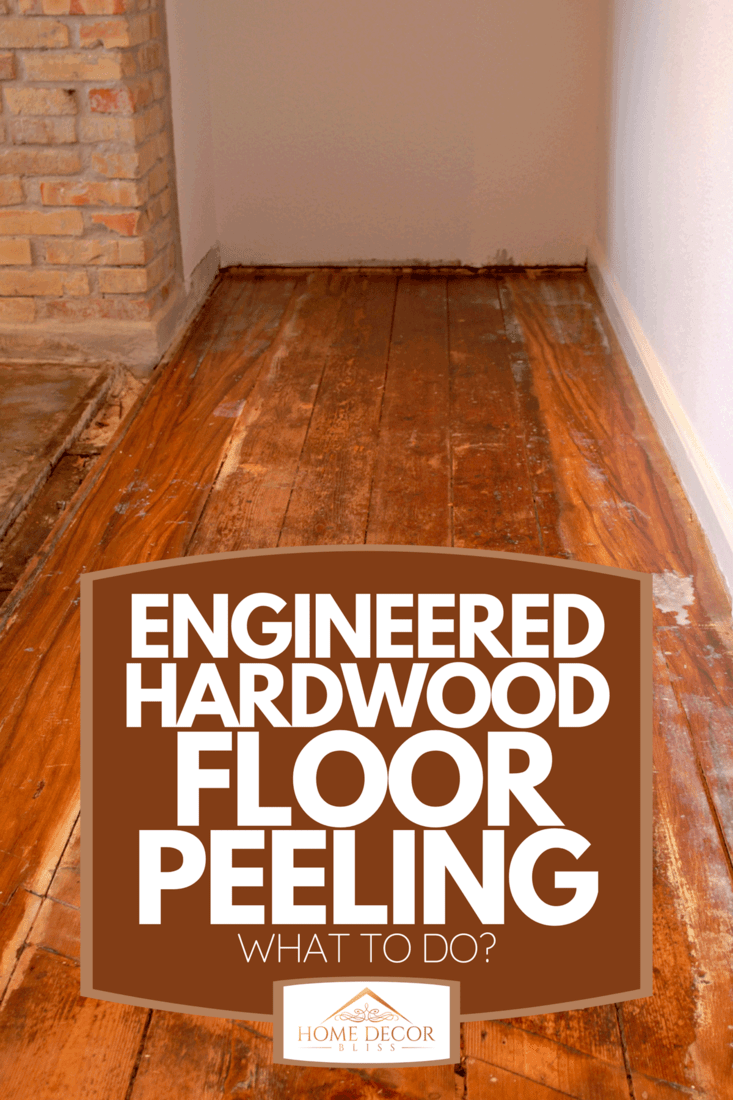Engineered hardwood floors are great for quick installation and easy maintenance. However, one setback of these floors is their propensity to peel at some point. What causes this? And more so, how do you fix it? We have researched the cause of peeling engineered hardwood and have looked into the best ways to fix it. In this post, we'll cover it.
More often than not, engineered hardwood will begin to peel if it is exposed to water or over 10 to 12 years old. When moisture is the primary culprit of the peeling, the floor can be repaired using a combination of sanding, wood repair filler, and other options. However, when the floor's finish begins to peel due to traffic or everyday wear and tear, you can often refinish the floor to make it look brand new.
To repair your peeling hardwood floor, follow these steps:
- Repair damaged areas
- Replace damaged planks
- Sand the floor
- Sweep the floor
- Apply a stain
- Apply a sealant
It helps to know how to refinish your floor to prevent damage while repairing the scratches and dull areas. There are a few different ways to do this, depending on the current appearance of the floor and the type of engineered wood you have. Continue reading to learn about a general method that you can use to make your engineered wood floors look brand new.
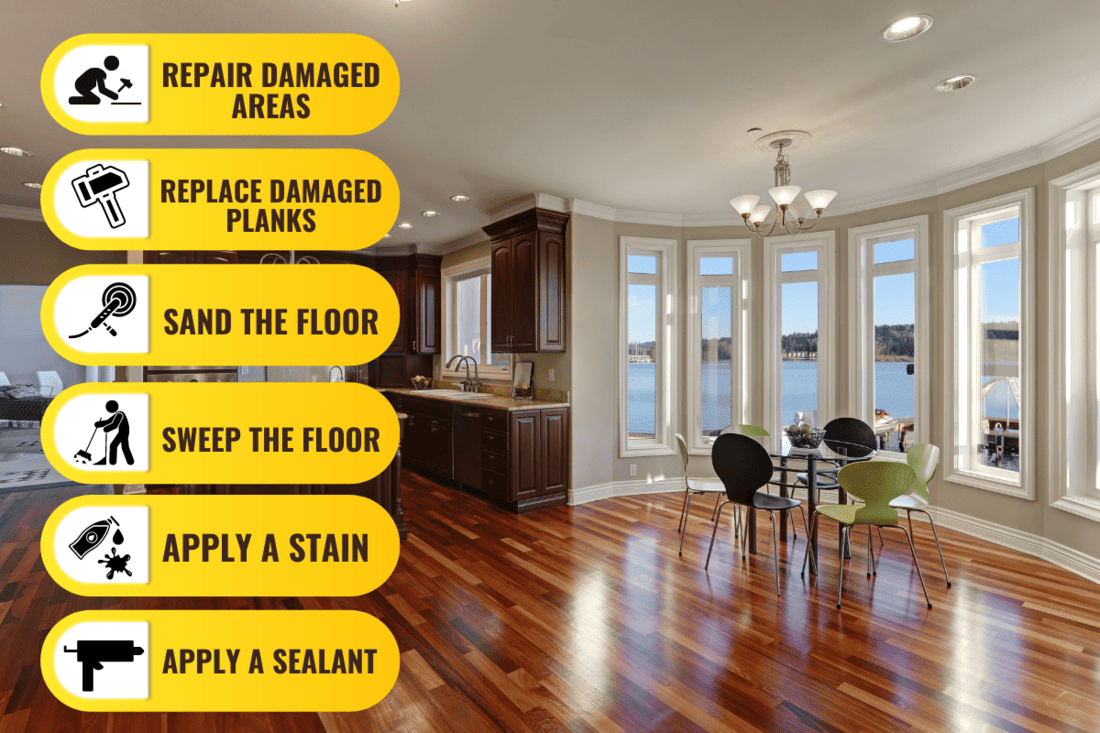
Steps to Fix Peeling Engineered Wood Floors
Things you'll need:
- Wood floor cleaner
- 2-gallon bucket
- Wood repair or wood filler
- Drill
- Electric sander or orbital sander
- Wood polish or lacquer
- Broom
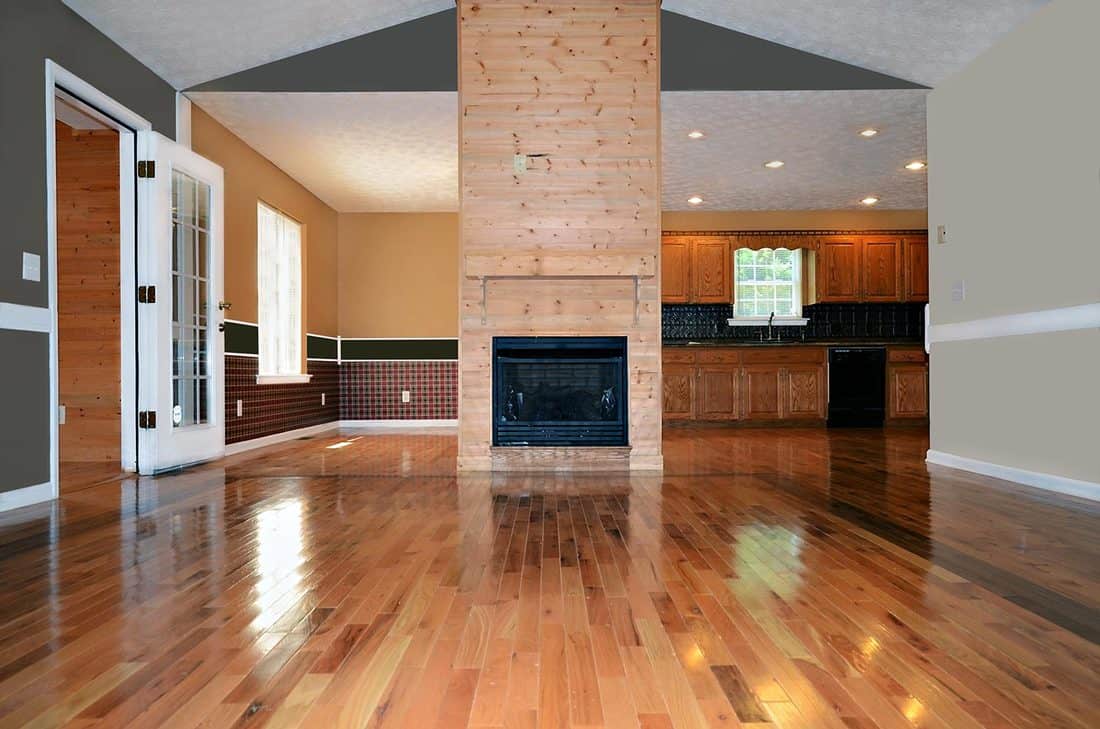 1. Repair damaged areas
1. Repair damaged areas
Start by repairing any areas in the floor that have holes, gouges, or dents. You can use a wood filler to do this in addition to a sanding machine or sanding block. If the damage is caused by moisture, you'll also want to ensure that the floor is completely dry before sanding or repairing it. If you use an epoxy-based filler, be sure that the solution is applied properly and given the recommended time to cure before sanding it down.
We may include affiliate links and curated AI content to highlight top design styles.
Check out this epoxy wood filler on Amazon.
2. Replace damaged floor planks
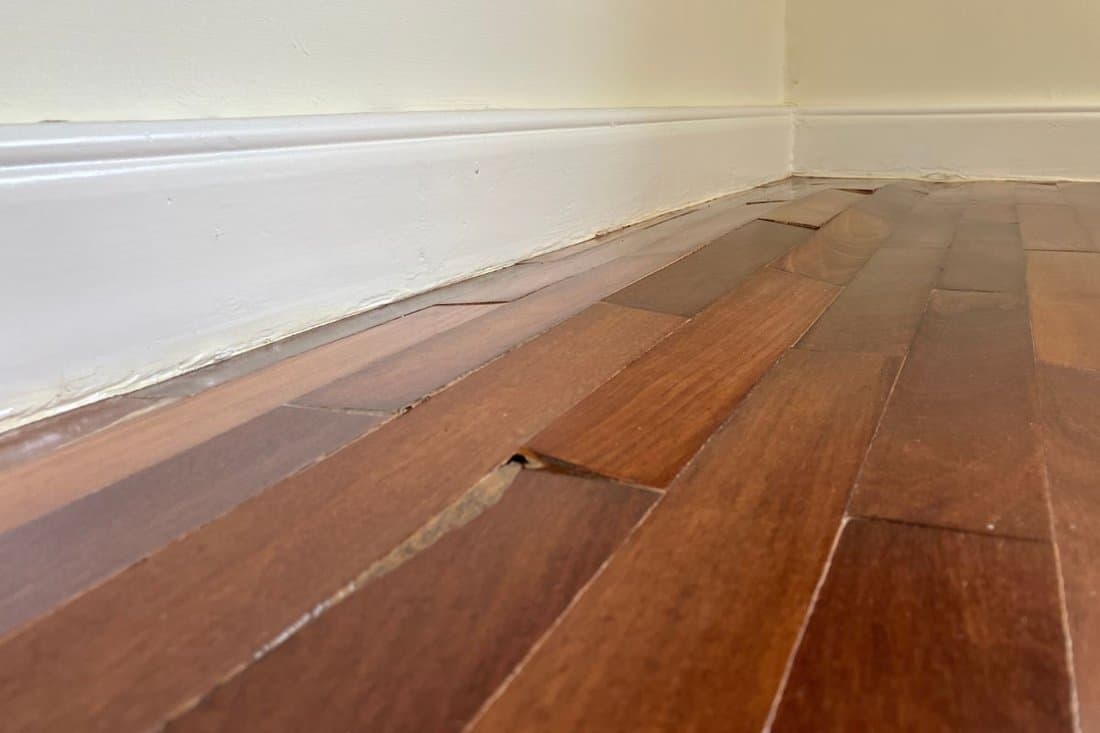
If there are planks that are too damaged for repair, they'll need to be removed before you can refinish the floor. You can remove the planks using a circular or reciprocal saw or a pry bar and hammer. If you prefer to use a saw, be sure to only cut about halfway into the floor and do so lengthwise to avoid accidentally cutting the subfloor beneath the planks.
After the initial cut, you can then pry out the plank with the pry bar. The engineered floor should break in half once you apply the pry bar. If not, make a deeper cut out of about 1/8 of an inch. Be careful when prying the plank out of its' position, as you don't want to damage the adjacent floorboards. When replacing the plank with the new board, you may need to sand it a bit before applying any stains or finishing to match the rest.
Check out this circular saw on Amazon.
3. Sand the floor
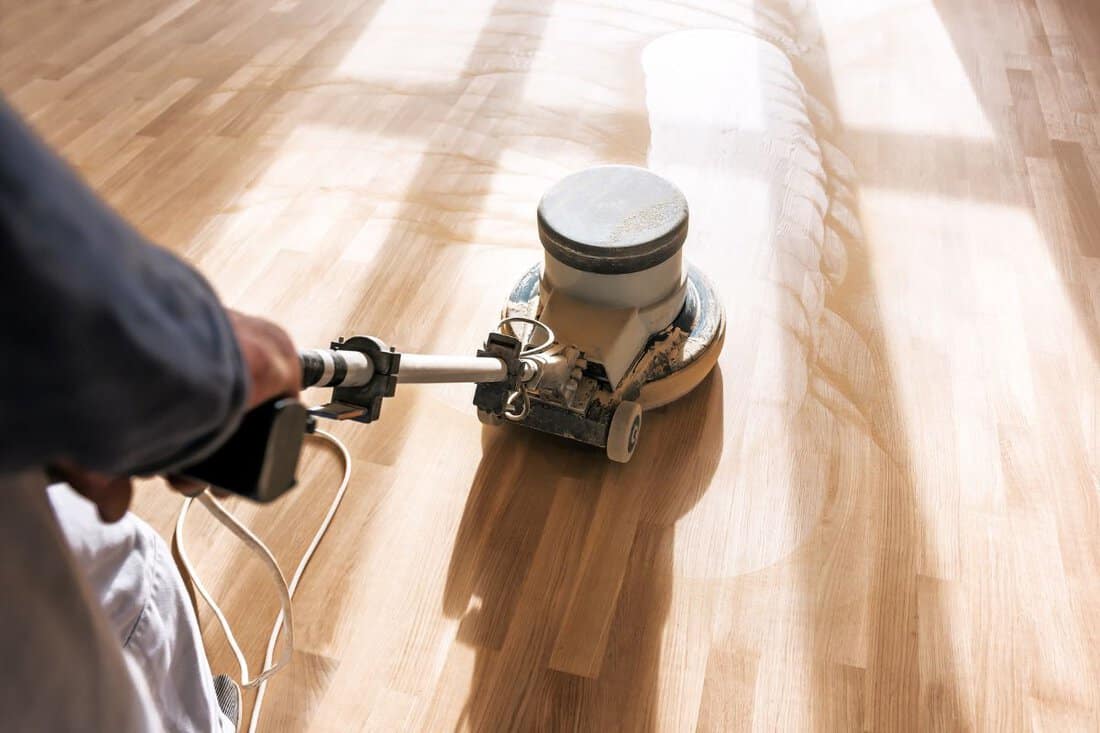
Next, take your orbital sander and add a fine-grit sanding disc (around 200-grit) to the bottom of it. Then go over the floors carefully to help remove the top layer of the floor's finish. Remember that this finish may be very thin, so you'll want to start slowly to prevent damaging it.
Remember that sanding engineered wood can ruin the floor by removing the composite material underneath the veneer, so it's important to be as careful as possible. You can also use a floor sander to speed up this process. They can be rented from home improvement stores such as Lowe's and Home Depot.
Read more details about this orbital sander on Amazon.
4. Sweep the floor
After you've sanded the entire floor, sweep up the sanding dust and inspect the finish. Look for any holes or gaps in the finish that may have developed during the sanding process. If you find any, be sure to repair these areas with wood filler and sand them down so that they're flush with the rest of the surface of the floor. Be sure to wipe up any dust after doing this as well. If you are repairing small areas, you can use a sanding block or paper instead of an orbital sander.
5. Apply a stain
Now it's time to apply the stain to the floor. Take your stain and gently agitate the can to mix up the solution. Use an angled paintbrush to cut in the perimeters of the floor first and then go over it with the roller. Apply anywhere from one to three coats of wood stain to the floor, applying them evenly. You'll also want to make sure that you are working your way backward and out of the room to avoid stepping on the newly stained areas.
Check out this angled paintbrush set on Amazon.
6. Apply a sealant or finish
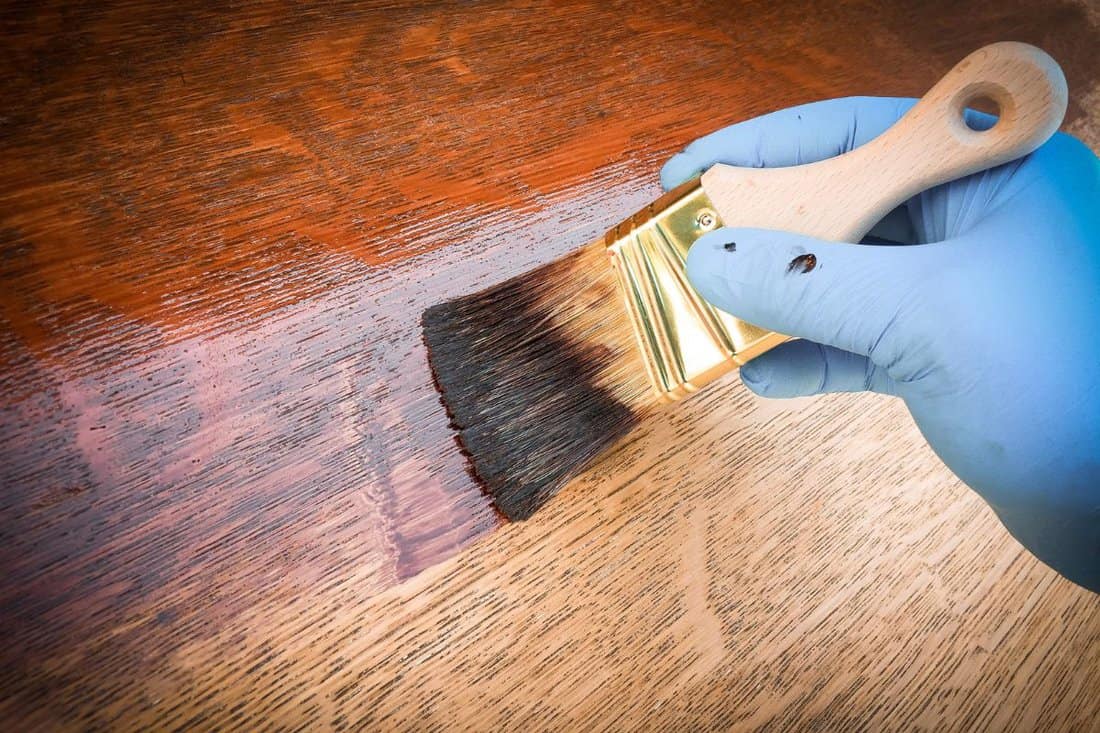
Give your stain time to dry, and then grab your finish or a quality sealant. Once the floor is dry, apply the finish or sealant to the floor using your paintbrush and roller. Similar to the stain application, be sure to apply the sealant using thin, even strokes. If you plan to apply more than one coat, make sure that each coat dries before applying the next coat.
You can find the recommended drying time on the back of the product's label, but it's always a good idea to do a small test on an inconspicuous area with your finger as well.
Check out this wood sealant on Amazon.
More of a visual learner? Check out this video to see how to refinish your engineered hardwood floors:
Why is my engineered wood floor peeling?
If your engineered wood floor is peeling, chances are it's due to wear and tear from everyday traffic or water damage and humidity. Engineered flooring is very durable, but it does tend to peel over time. If the wood has been exposed to water for an extended amount of time, the top layer will begin to peel back, exposing the wood beneath it. This wood will easily scratch if it is not repaired and sealed. You can prevent the floor from becoming damaged by applying a sealant.
Can you repair engineered hardwood floors?
Absolutely. There are different grades of flooring when it comes to engineered wood, similar to genuine hardwood. You can use wood filler and putty to repair the engineered wood. Once the filler or putty dries, it will need to be sanded down.
And after that, the repaired area can typically be painted or stained. Keep in mind that sometimes engineered floor panels may not need to be repaired but replaced instead. If the floor has water damage that has caused the planks to begin to bubble or bow, you'll need to remove them before doing any further repairs.
How do you fix peeling hardwood floors?
The best way to fix peeling hardwood floors is to sand them down and then refinish them. You can do this in several ways. Depending on the extent of the peeling and the area that it covers, you can use an orbital sander, sanding block, or an electric floor sander to perform this task.
Next, you'll need to apply a stain to restore the texture or grain to the flooring. And finally, you'll finish up the task by applying a sealant or finish to the floor to help make it shine and bring out the grain's natural texture.
How do you make engineered hardwood floors look new again?
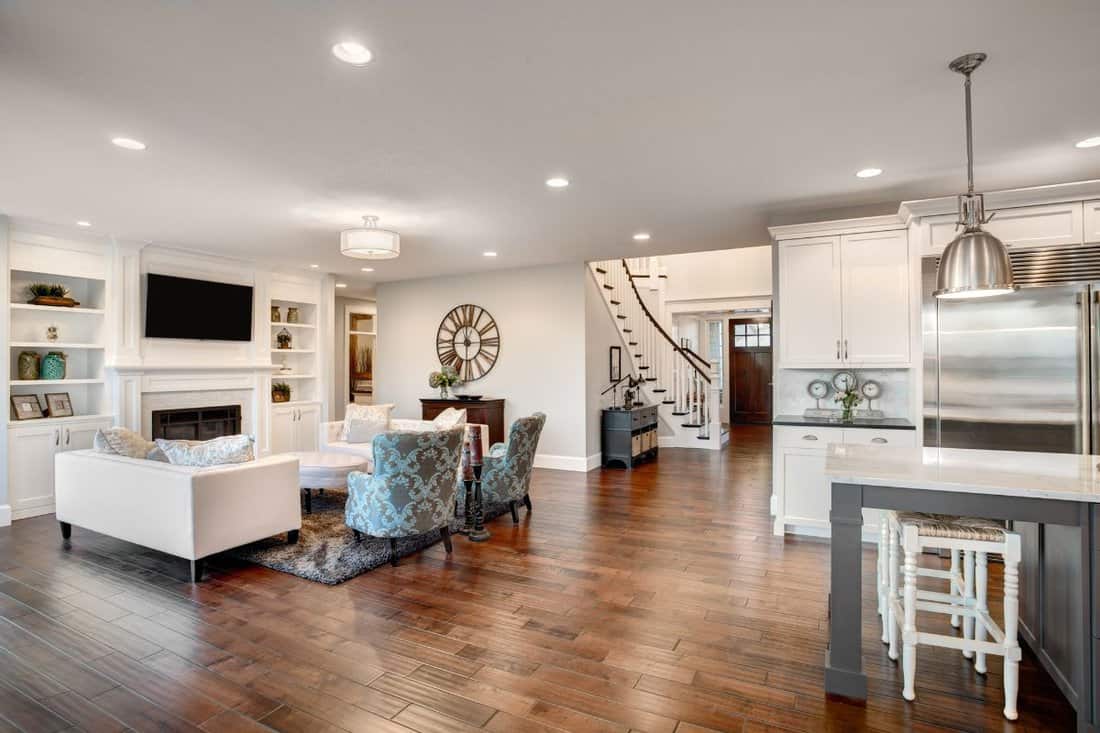
If you want to make your engineered hardwood floors look new again, you'll need to repair and refinish them. If the floors look old or worn due to water damage or heavy traffic, the best place to start is by repairing and sanding the floors down. When engineered hardwood floors have significant damage, you may need to replace the planks entirely. However, if there are deep holes or dents, you can fill these areas with putty or wood filler.
Once you have removed the old finish and repaired the damaged areas, you can add a new color or stain to the floor and then a sealant to make them shine again. This way, you will have beautiful floors with natural wood grain texture and a shiny finish.
Wrapping Things Up
Repairing engineered wood floors may sound like a lot of work, and it can be an all-day task. However, the process is fairly simple, and it can be accomplished quickly if you use a floor sander and a paint roller with a handle. Keep in mind that this task will be physically laboring, so be prepared to use a bit of elbow grease or split it up with an assistant.
Be sure to check out some of our others before you go:
What’s The Best Rug For Hardwood Floors In The Kitchen?
How Long And Wide Are Rug Runners?
